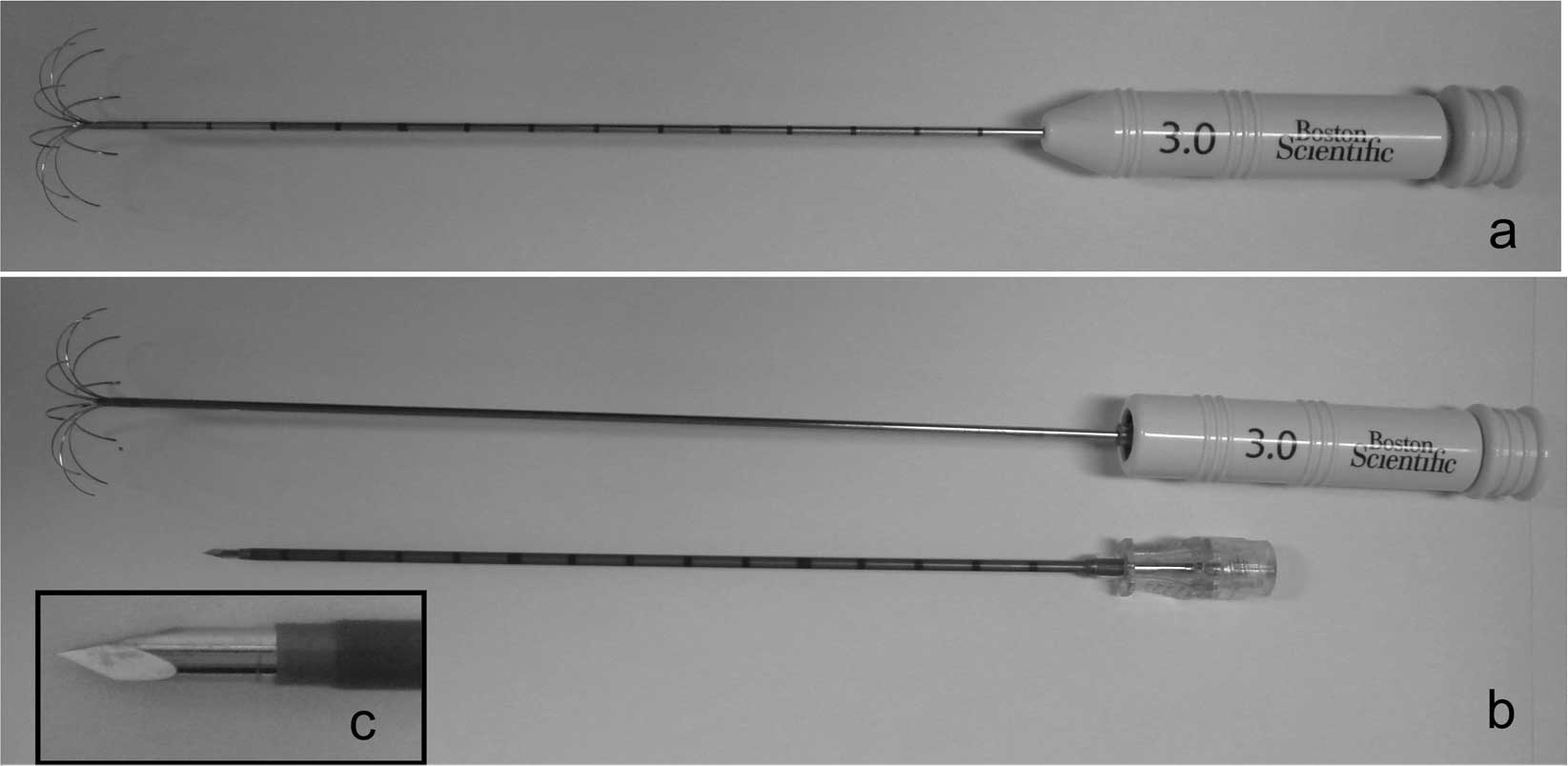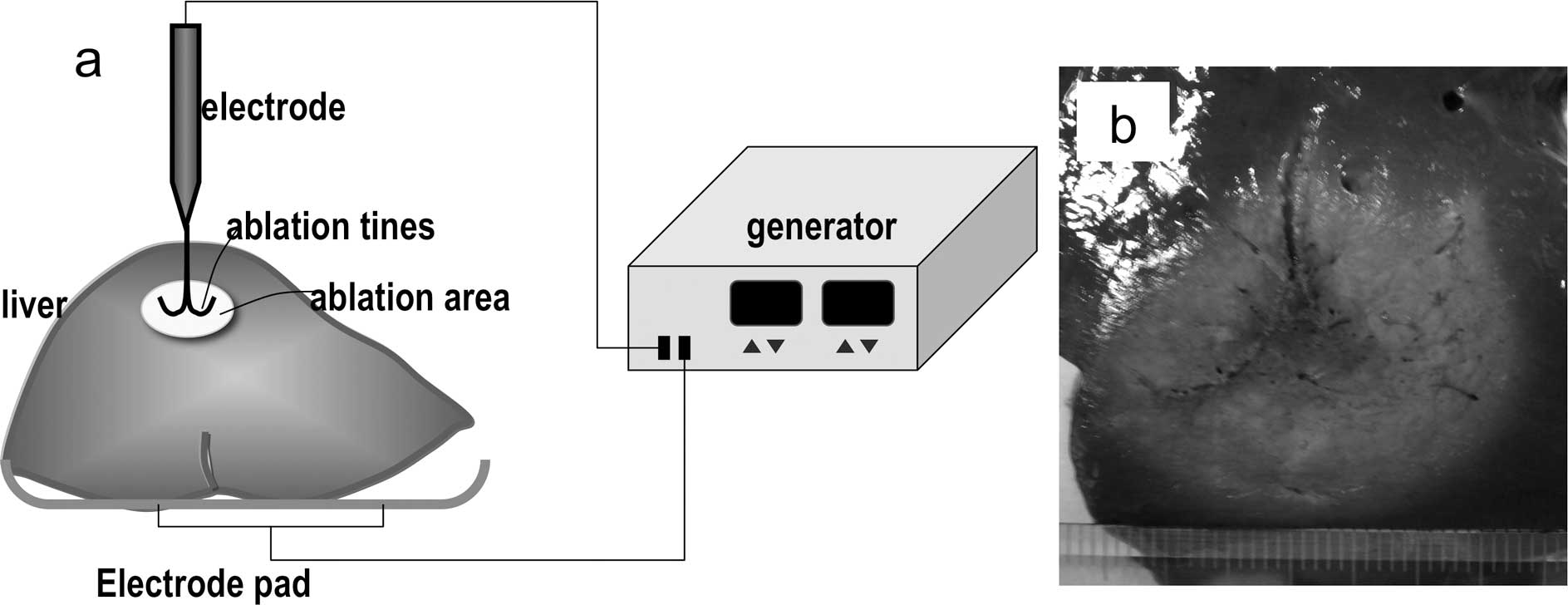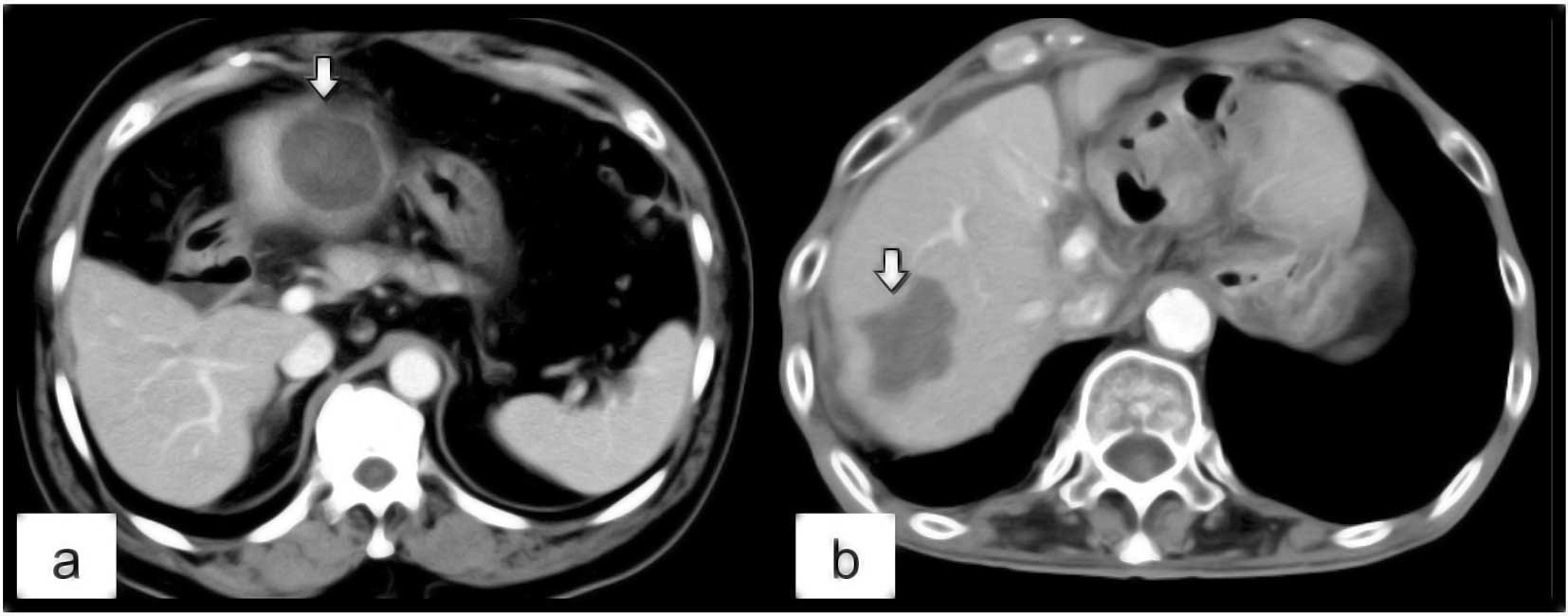|
1
|
Vivarelli M, Guglielmi A, Ruzzenente A, et
al: Surgical resection versus percutaneous radiofrequency ablation
in the treatment of hepatocellular carcinoma on cirrhotic liver.
Ann Surg. 240:102–107. 2004. View Article : Google Scholar : PubMed/NCBI
|
|
2
|
Curley SA, Izzo F, Ellis LM, Vauthey JN
and Vallone P: Radiofrequency ablation of hepatocellular cancer in
110 patients with cirrhosis. Ann Surg. 232:381–391. 2000.
View Article : Google Scholar : PubMed/NCBI
|
|
3
|
Gervais DA, Goldberg SN, Brown DB, Soulen
MC, Millward SF and Rajan DK: Society of interventional radiology
position statement on percutaneous radiofrequency ablation for the
treatment of liver tumors. J Vasc Interv Radiol. 20:3–8. 2000.
View Article : Google Scholar
|
|
4
|
Livraghi T, Meloni F, Di Stasi M, et al:
Sustained complete response and complications rates after
radiofrequency ablation of very early hepatocellular carcinoma in
cirrhosis: is resection still the treatment of choice? Hepatology.
47:82–89. 2008. View Article : Google Scholar
|
|
5
|
Bhardwaj N, Strickland AD, Ahmad F,
Dennison AR and Lloyd DM: Liver ablation techniques: a review. Surg
Endosc. 24:254–265. 2010. View Article : Google Scholar : PubMed/NCBI
|
|
6
|
Nakazawa T, Kokubu S, Shibuya A, et al:
Radiofrequency ablation of hepatocellular carcinoma: correlation
between local tumor progression after ablation and ablative margin.
AJR. 188:480–488. 2007. View Article : Google Scholar
|
|
7
|
Liu CH, Arellano RS, Uppot RN, Samir AE,
Gervais DA and Mueller PR: Radiofrequency ablation of hepatic
tumours: effect of post-ablation margin on local tumour
progression. Eur Radiol. 20:879–885. 2009.PubMed/NCBI
|
|
8
|
Denys AL, De Baere T, Kuoch V, et al:
Radio-frequency tissue ablation of the liver: in vivo and ex vivo
experiments with four different systems. Eur Radiol. 13:2346–2352.
2003. View Article : Google Scholar : PubMed/NCBI
|
|
9
|
Mendiratta-Lala M, Brook OR, Midkiff BD,
et al: Quality initiatives: strategies for anticipating and
reducing complications and treatment failures in hepatic
radiofrequency ablation. Radiographics. 30:1107–1122. 2010.
View Article : Google Scholar : PubMed/NCBI
|
|
10
|
Kobayashi M, Ikeda K, Someya T, et al:
Stepwise hook extension technique for radiofrequency ablation
therapy of hepatocellular carcinoma. Oncology. 63:139–144. 2002.
View Article : Google Scholar : PubMed/NCBI
|
|
11
|
Choi D, Kim SK, Lim HK, et al: Overlapping
ablation using a coaxial radiofrequency electrode and multiple
cannulae system: experimental study in ex-vivo bovine liver. Korean
J Radiol. 4:117–123. 2003. View Article : Google Scholar : PubMed/NCBI
|
|
12
|
Goldberg SN, Gazelle GS, Dawson SL,
Rittman WJ, Mueller PR and Rosenthal DI: Tissue ablation with
radiofrequency: effect of probe size, gauge, duration, and
temparature on lesion volume. Acad Radiol. 2:399–404.
1995.PubMed/NCBI
|
|
13
|
Solazzo SA, Ahmed M, Liu Z, Hines-Peralta
AU and Goldberg SN: High-power generator for radiofrequency
ablation: larger electrodes and pulsing algorithms in bovine ex
vivo and porcine in vivo settings. Radiology. 242:743–750. 2007.
View Article : Google Scholar : PubMed/NCBI
|
|
14
|
Appelbaum L, Sosna J, Pearson R, et al:
Algorithm optimization for multitined radiofrequency ablation:
comparative study in ex vivo and in vivo bovine liver. Radiology.
254:430–440. 2010. View Article : Google Scholar : PubMed/NCBI
|
|
15
|
Berber E, Herceg NL, Casto KJ and
Siperstein AE: Laparoscopic radiofrequency ablation of hepatic
tumors. Surg Endosc. 8:390–396. 2004. View Article : Google Scholar
|
|
16
|
Kotoh K, Nakamuta M, Morizono S, et al: A
multi-step, incremental expansion method for radio frequency
ablation: potimization of the procedure to prevent increases in
intra-tumor pressure and to reduce the ablation time. Liver Int.
25:542–547. 2005. View Article : Google Scholar : PubMed/NCBI
|
|
17
|
Patterson EJ, Scudamore CH, Owen DA, Nagy
AG and Buczkowski AK: Radiofrequency ablation of porcine liver in
vivo: effects of blood flow and treatment time on lesion size. Ann
Surg. 227:559–565. 1998. View Article : Google Scholar : PubMed/NCBI
|
|
18
|
Goldberg SN, Hahn PF, Halpern EF, Fogle RM
and Gazelle GS: Radio-frequency tissue ablation: effect of
pharmacologic modulation of blood flow on coagulation diameter.
Radiology. 209:761–767. 1998. View Article : Google Scholar : PubMed/NCBI
|
|
19
|
Lu DS, Raman SS, Vodopich DJ, Wang M,
Sayre J and Lassman C: Effect of vessel size on creation of hepatic
radiofrequency lesions in pigs: assessment of the ‘heat sink’
effect. Am J Roentgenol. 178:47–51. 2002.PubMed/NCBI
|
|
20
|
Rossi S, Garbagnati F, Lencioni R, et al:
Percutaneous radio-frequency thermal ablation of nonresectable
hepatocellular carcinoma after occlusion of tumor blood supply.
Radiology. 217:119–126. 2000. View Article : Google Scholar
|
|
21
|
Yamakado K, Nakatsuka A, Ohmori S, et al:
Radiofrequency ablation combined with chemoembolization in
hepatocellular carcinoma: treatment response based on tumor size
and morphology. J Vasc Interv Radiol. 13:1225–1232. 2002.
View Article : Google Scholar : PubMed/NCBI
|
|
22
|
Veltri A, Moretto P, Doriguzzi A, Pagano
E, Carrara G and Gandini G: Radiofrequency thermal ablation (RFA)
after transarterial chemoembolization (TACE) as a combined therapy
for unresectable non-early hepatocellular carcinoma (HCC). Eur
Radiol. 16:661–669. 2006. View Article : Google Scholar
|

















